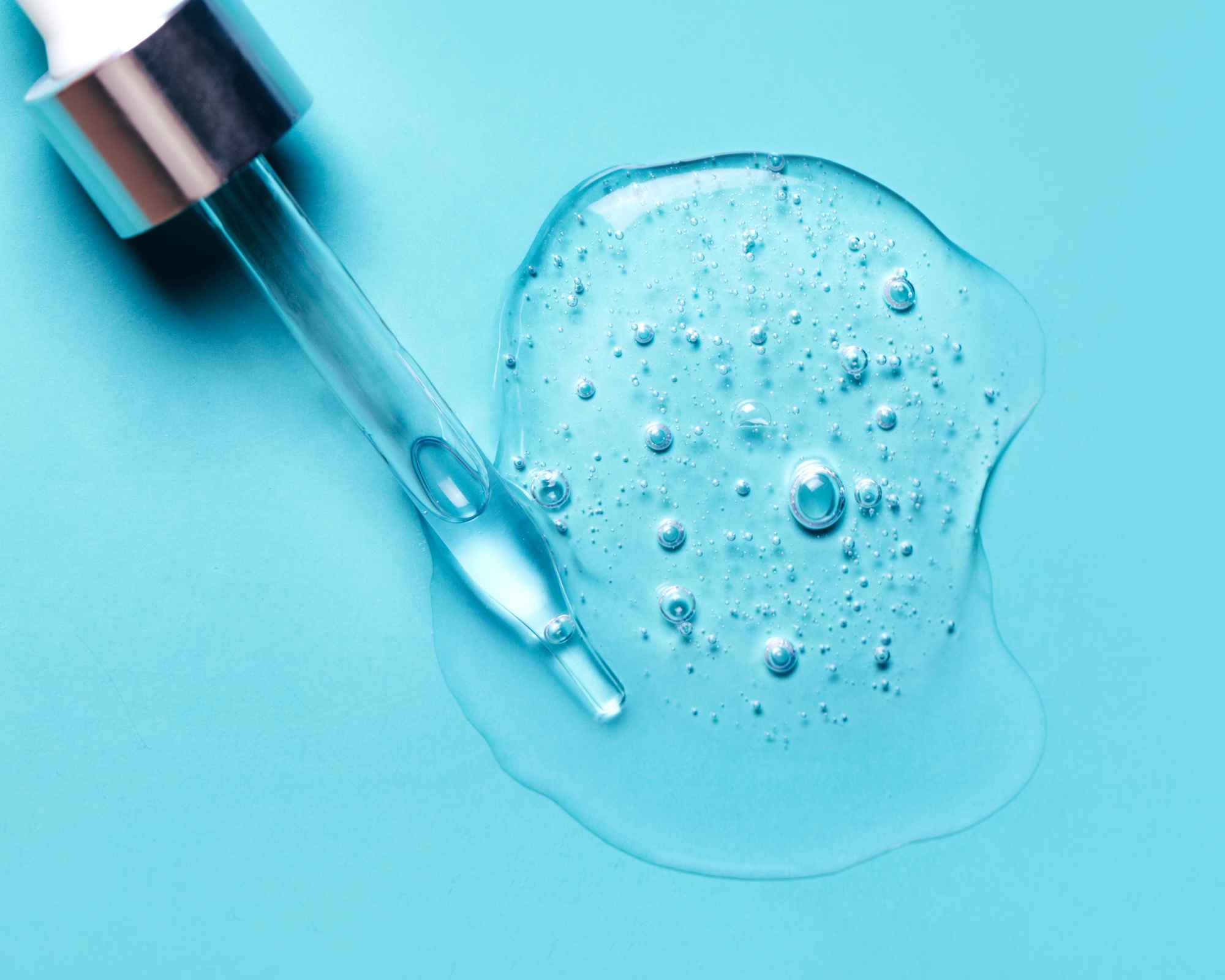The vast majority of beauty brands don’t tell us all the ingredients that go into our products—especially when it comes to fragrance. That’s according to new data from Good On You, which reveals how poor ingredient transparency leaves consumers in the dark. Sophie Benson investigates how brands are getting away with sharing so little about what goes into their products.
It’s what’s inside that counts
Every day, billions of consumers use beauty and personal care products such as soap, shampoo, cleanser, moisturiser, and foundation without knowing everything they’re made of.
But it’s not because no one cares to find out. As Good On You’s Beauty Sustainability Scorecard reveals, many brands are systematically depriving their customers of crucial ingredient information.
Good On You’s analysts rated 239 brands, from industry giants to small startups, and discovered a glaring transparency issue. While brands often clamour to say what isn’t in their products—from parabens to sulphates—they are rather less inclined to be open and honest about what is in them.
This first-ever industry-wide survey on beauty brand sustainability found that:
- 90% of brands use fragrance ingredients but most—72%—do not disclose the exact ingredients they use.
- 75% of brands disclose ingredient lists online but do not provide any clear information on quantities used (ie weight, volume, or percentages).
Ingredients can reveal a lot about a product and the brand that sells it, says Good On You’s beauty ratings manager Becca Willcox, including sustainability across a product’s lifecycle, agricultural and animal impacts, and even clues about human rights in the supply chain. Yet key information is often hidden behind technical language or simply not disclosed at all.
‘Trade secrets’ are an easy excuse
There are 3,619 ingredients on the International Fragrance Association (IFRA) Transparency List, used to give products from perfumes to sunscreens their unique scent. A single product could contain tens or even hundreds of them. However, this huge array of chemical components is often masked on ingredient lists under a single umbrella term, either “fragrance” or “parfum”.
Why? Because it is considered proprietary information—a trade secret.
“It’s their right as a brand to be able to protect their trade secrets, but why is that more important than a person’s right to know exactly what’s in their body?” asks Jessica DeFino, beauty reporter and author of The Review of Beauty newsletter.
It’s not just the principle of the matter, but a potential health issue. 35% of US adults reported migraines and respiratory difficulties when exposed to fragrance products, while a 2021 paper on the hazards of fragrances in consumer products stated that they can cause “detrimental health or environmental effects including contact dermatitis […] photosensitivity, photo-allergy, and immediate contact reactions, which can negatively impact the quality of life.” The implications can also be much more grave, as campaign groups and organisations such as the Campaign for Safe Cosmetics and the Environmental Working Group cite scientific evidence linking certain fragrance ingredients to cancer, endocrine disruption, and reproductive toxicity.
Why is protecting trade secrets more important than a person's right to know exactly what's in their body?
Jessica DeFino – writer of The Review of Beauty newsletter
Cancer links in particular are often disputed, and research is ever-evolving, sometimes conflicting, so it’s difficult to say with certainty what the more serious risks may be—and a lack of transparency around ingredients makes it even harder.
In the EU, just 26 of the 3,000-plus fragrance ingredients must be specifically listed because they are defined as allergens. It will rise to 81 in 2026 for new products and 2028 for existing products but the figure is still woefully low. In the US, it is currently zero. Due to the Modernisation of Cosmetics Regulation Act 2022 (MoCRA), some fragrance allergens will have to be listed in future, though the rule has been delayed so consumers remain in the dark.
Voluntary disclosure measures are falling short
One of the few journalists who has really dug into the issue, DeFino first became interested in ingredient transparency when she developed dermatitis. “I was down rabbit holes in Reddit threads and internet chat rooms, [asking] what are some of the ingredients that might be making me more sensitive? I became sort of obsessed with knowing exactly what was in my products and disappointed that, a lot of times, I couldn’t know and therefore couldn’t actually heal my skin,” she says. “To me, it seemed like an issue of not only health but autonomy and our rights as consumers.”
With regulation lacking, some retailers and brands have made their own moves. All of Credo Beauty’s 130+ brand partners answered the retailer’s 2019 request to categorise the source of their fragrance for every product (fragrance-free, essential oils, certified organic, natural, naturally derived, or synthetic) and 68% have disclosed all fragrance ingredients, showing that brands do in fact have access to this information and can share it when pushed. L’Oréal, meanwhile, states it reveals at least 95% by weight of the ingredients present in its pure fragrance.
However, voluntary disclosures remain far from the norm, with the majority of brands opting not to disclose their exact fragrance ingredients.
But even disclosed ingredients can be hard to comprehend
Brands are legally required to disclose non-fragrance ingredients on product packaging using the International Nomenclature of Cosmetic Ingredients, or INCI names. These technical, standardised names for cosmetic ingredients—such as “olea europaea fruit oil” for olive oil and “butyrospermum parkii butter” for shea butter—aren’t easily recognisable.
At the consumer level, it means a brand’s audience can’t readily decipher what’s in the products they’re using. “My concern is the amount of research and knowledge this requires of the consumer,” says DeFino. “We are putting so much onus on the consumer to know what every single one of the, say, fifty cosmetic chemicals in a serum are.”
It also makes it harder to hold brands accountable. Good On You’s ratings methodology hones in on a selection of commodity ingredients and brands’ approaches to sourcing them: palm oil, soy, coconut, cocoa, shea, vanilla, and sugarcane. They’re used in huge volumes globally—the Roundtable on Sustainable Palm Oil estimates at least 70% of all cosmetics contain palm oil or palm kernel oil derivatives—and can therefore have significant social and environmental impacts such as deforestation, biodiversity loss, and child labour, but they’re often hidden in ingredient lists.
Consumers are putting animal products on their faces, and they have no idea.
Becca Willcox – beauty ratings manager at Good On You
For instance, palm oil or its derivatives could be present in a product in the form of an ingredient called cetearyl glucoside. But cetearyl glucoside can be produced from a number of different natural and synthetic sources, so without full, clear disclosure, the presence of palm oil can fly under the radar and the brand can escape supply chain scrutiny. Brands with a more responsible approach to sourcing such ingredients will take steps such as using certified sources, working with growers, and protecting biodiversity. Would they go to such lengths if no one knows they’re using it?
“Animal products are another element I’ve been shocked by,” says Willcox. “We’ve had to really delve into the ingredients and even then, it’s not always totally clear if it’s derived from animals or not.” Uncertainty around animal-derived products not only impacts consumers’ ability to make informed choices but also buries the topic of animal welfare. “Consumers are putting animal products on their faces, and they have no idea about the conditions [they’re reared in], or where they’ve come from.”
A few brands are setting a better example
Some brands are taking extra steps to be more open: For example, Austin Austin helps consumers navigate opaque terminology with bracketed layman’s terms on the labels, though Willcox says there are few other examples of brands doing this. Ulé has an interactive map for each product which shows where each ingredient is sourced from, while personal care brand Disruptor London, which was the highest rated small brand in the Beauty Sustainability Scorecard, has a toggle on its product pages that allows customers to switch between INCI names and plain English.
We should be as aware of what we’re putting on our bodies as we are of what food we consume.
Sira Naidu – co-founder of Disruptor London
“How many people understand the Latin names for ingredients?” asks Sira Naidu, co-founder of Disruptor London. “We should be as aware of what we’re putting on our bodies as we are of what food we consume.”
Ingredient transparency is the first of five pillars Disruptor London is built around. “For a brand-new brand starting from scratch, it’s easier to lay these foundations and set a high bar on how we’d want to do things,” Naidu explains. Part of this meant giving a lot of real estate on its website over to the subject, listing the functionality of each ingredient, sources, and certifications.
Disruptor London is in good company: 75% of brands disclose some ingredient lists online, but they’re not all as thorough. Some provide INCI names only, and there’s often a caveat stating that ingredients may change and packaging should be referred to for the most up to date information.
As many as 48% of millennials and 35% of Gen Z consumers shop for beauty products online—that’s a huge amount of people who could be buying with out of date information. Even when the physical product is in hand, outer packaging is often discarded immediately, and on-product information can easily peel off or fade, leaving the consumer with no usable information at all.
Poor transparency perpetuates greenwashing
While brands may be obliged to disclose INCI names, they are not required to disclose the quantities of each ingredient within the formula.
The only clue, for those in the know, is that they must be listed in descending order of concentration, meaning the ingredients present in the highest concentration sit at the top of the list. Though the 75% of brands who disclose ingredients online do not disclose concentrations, the order of listing can still be revealing if you look closely. “Often a brand will be promoting one ingredient as their superpower ingredient. [They say] ‘this is the ingredient that we trace… we work with farmers or communities on the ground’, and then I’ll look at the ingredients list, and it’ll be two or three from the bottom,” explains Willcox.
“I’d say it’s a form of greenwashing” she continues. “It’s diverting attention.”
Such selective disclosure coupled with a widespread lack of transparency means brands often tell us more about their ethics, their sustainability and their approach to safety with what they refuse to share than with what they do.
DeFino sees it like this: “I’m actually glad that brands are being clear about that, they’re very clearly saying ‘this business is more important to me than the consumer’”. And as consumers, we ought to sit up and pay attention.




















